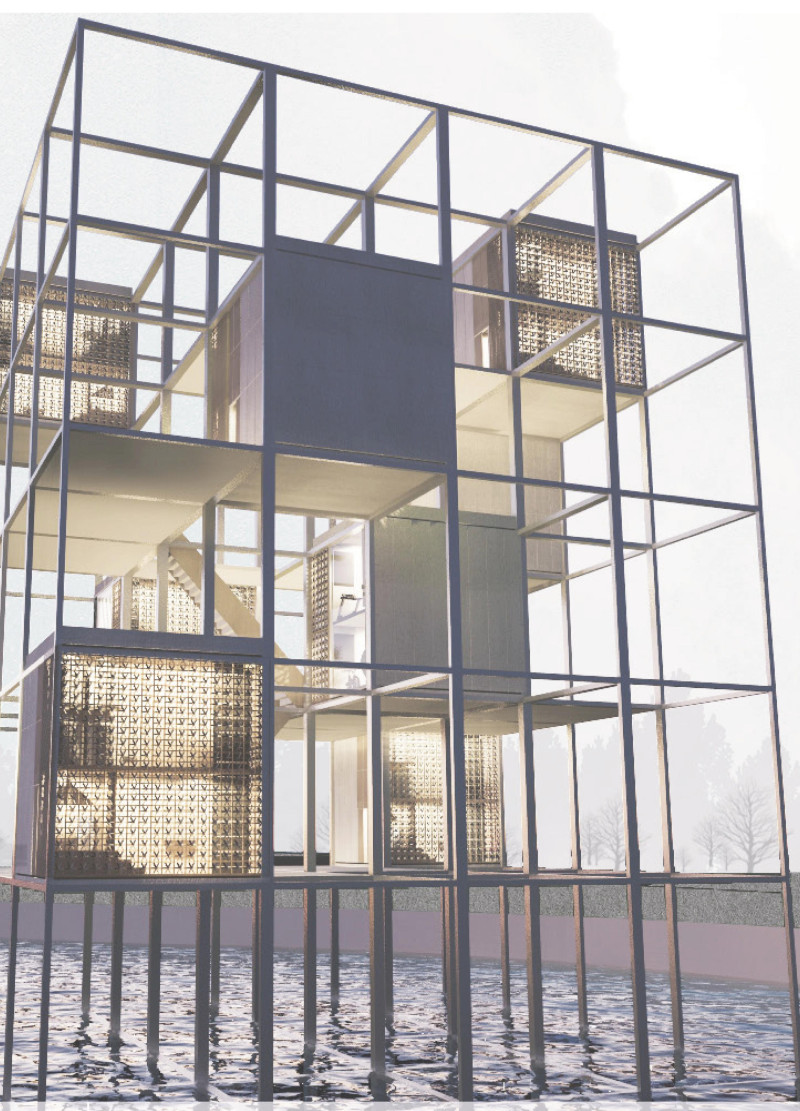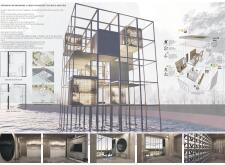5 key facts about this project
The "Towering Microhomes" project addresses the challenges of urban living in Singapore, a city known for its dense population and limited land availability. The initiative focuses on creating compact living spaces that prioritize functionality and sustainability. By reimagining underused areas—like spaces beneath highway bridges and gaps between tall buildings—the project transforms these overlooked sites into active residential environments. It aims to redefine what it means to live in a community, offering microhomes as a practical solution to current housing issues.
Design Concept
The design centers on efficient spatial organization, where every area serves multiple purposes. Ground and first-floor plans create a layout that allows for everyday activities, such as cooking, exercising, and socializing, all within a small footprint. This thoughtful arrangement not only meets the essential needs of residents but also encourages interaction and a sense of community.
Sustainability Measures
Self-sufficiency is a key focus, with off-grid structures that adapt to various urban contexts. Water management systems are designed to draw and filter seawater, providing an ongoing solution to local water shortages. These systems promote sustainability while ensuring that residents have access to clean water. Additionally, power storage solutions are implemented, reducing dependency on traditional urban utilities and promoting a more resilient living environment.
Renewable Energy Integration
A notable aspect of the design is the service compartment area, which features external vanes that harness wind energy. This energy is converted into electricity, making the microhomes partially self-sufficient. Solar panels further enhance the energy supply, allowing residents to depend less on conventional electricity sources. This careful attention to renewable energy sources demonstrates a commitment to sustainable practices.
Community Engagement
Urban farming plays an important role, encouraging residents to participate in food production. This initiative not only promotes sustainability but also fosters connections between neighbors. By involving the community in shared tasks, the design cultivates a strong sense of belonging. Daily cooking is facilitated with systems that use stored electricity, while waste management solutions help convert food scraps into fertilizers for the urban farm.
Exercise areas equipped with spin bikes and treadmills add another layer to the living experience. These spaces promote health and wellness, allowing residents to stay active. Importantly, the equipment also generates energy that can be stored for later use. This integration of various elements creates a holistic living environment that addresses the needs of today's urban dwellers, emphasizing community, sustainability, and efficiency.



















































